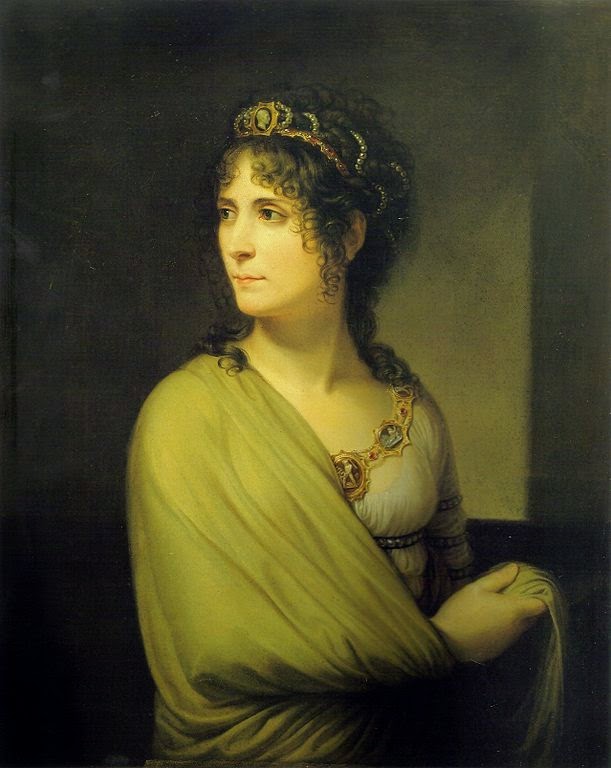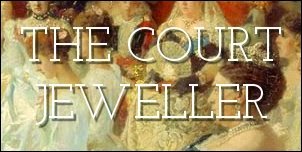 |
| Joséphine de Beauharnais (source) |
Two hundred nineteen years ago today, Joséphine de Beauharnais, the Caribbean-born widow of a French aristocrat, married Napoléon Bonaparte, the French military commander who would one day become the country’s emperor. Joséphine wore a number of gorgeous pieces of jewelry in her lifetime; her descendants, who have married into numerous royal families, have continued her bejeweled legacy.
But how many of the pieces of jewelry said to have come from Joséphine’s collection were really worn by the empress? Today, let’s take a look at seven pieces often linked to Joséphine — and we’ll discuss whether or not their imperial provenance is genuine.
King Carl XVI Gustaf of Sweden, the nation’s reigning monarch, is a direct descendant of Empress Joséphine through her son, the Duke of Leuchtenberg. Numerous pieces of the family’s jewelry are said to have come from Joséphine’s collections. One set, the family’s parure of cameo jewels, is often specifically said to have been worn by Joséphine. The set depicts scenes from the myth of Cupid and Psyche, and the tiara is often worn by Bernadotte brides on their wedding day.
Made in the first decade of the nineteenth century by Marie-Étienne Nitot, Napoléon’s court jeweler, the set is said to have been made for Joséphine before her divorce in 1810. There are no portraits of Joséphine wearing the cameos. But her daughter, Hortense, was painted in the cameo tiara in 1812. Either the cameos were made for Hortense — and as she was briefly Queen of Holland, she had some major jewelry — or they were made for Joséphine, who then gave them to her daughter. Furthermore, Vincent Meylan has argued that Joséphine merely loaned the cameos to Hortense, and that they were later inherited by her son, the Duke of Leuchtenberg.
The story goes that this remarkable set of amethysts — which originally included only a necklace, bracelets, earrings, and a stomacher — was Joséphine’s gift to Princess Augusta of Bavaria, on her marriage to Joséphine’s only son, Eugène de Beauharnais, in 1806. The timeline certainly fits: Joséphine was still married to Napoléon at the time of the wedding, and he had engineered the politically-beneficial match. There were hopes that Eugène and Augusta would eventually reign in Italy, so she needed plenty of jewels fit for a queen.
While tradition states that the amethysts were Joséphine’s wedding gift to Augusta, family lore assigns another gifter to her sapphire parure: Napoléon himself. The set is generally attributed to Marie-Étienne Nitot, his court jeweler. It seems likely that this set was made specifically as a wedding present for the newest member of Napoléon’s extended imperial family.
Like the Swedish royals, the current Norwegian king is descended directly from Joséphine through the Duke of Leuchtenberg. The grand emerald parure in the family’s jewel vault also came to them through their connections with the Leuchtenbergs. It’s been said that the set was worn by Joséphine herself, although that seems to be a problematic claim.
The style of the set is right for it to have been made during Joséphine’s tenure as empress; it bears significant stylistic similarities to emerald tiaras created for her contemporaries, including Empress Marie Louise (Napoléon’s second wife) and the Duchess of Angoulême. But according to Trond Norén Isaksen, family tradition states that the emeralds in this parure are Russian — and emeralds weren’t discovered in Russia until 1830, sixteen years after Joséphine’s death. If the emeralds are indeed Russian, it’s far more likely that the set was made for Joséphine’s daughter-in-law, the Duchess of Leuchtenberg.
The former royal family of Hanover owns a diamond tiara that is said to have been worn by Joséphine: the Brunswick Tiara. The diadem includes design motifs that were commonly used during the period when Joséphine was empress, but the chain of ownership is murky. The tiara ended up in the hands of Moritz Elimeyer, court jeweler to the Saxon royal family, by 1913, but there’s been no clear explanation of how he acquired it. The piece has also undergone signfiicant alterations during its lifetime. Ursula posits that a portrait of Joséphine features the original, unaltered version of the tiara, but the combination of possible artistic license and known changes to the design makes it difficult to come to a clear conclusion.
Current Owner: Privately owned
Did it belong to Joséphine? Some of the diamonds did
After her divorce from Napoléon, Joséphine became close to another emperor: Tsar Alexander I of Russia, who often visited her at her estate and brought her trinkets and gifts. One of these presents was a set of briolette-cut diamonds. The stones were inherited by the Duke of Leuchtenberg, and in 1890, his descendants commissioned Fabergé to set them in a tiara. The sparkler was owned by Belgian and Italian royals before it was eventually auctioned, but we know for sure that Joséphine could never have worn it.
This absolutely massive diamond tiara is said to have been made for Joséphine by Nitot for the imperial coronation of 1804. However, that provenance has been significantly questioned over the past decades. For one, there’s an extremely famous painting by David of Joséphine at the coronation, and she’s not wearing this tiara. Bernard Morel, a historian who wrote on the French crown jewels, noted that it doesn’t appear in any of the relevant jewel inventories; moreover, he and others have questioned whether the pointed base of the tiara really fits with the jewelry style of the era.
Van Cleef and Arpels acquired the tiara in a roundabout fashion. Vincent Meylan notes that it was sold as a part of Empress Eugénie’s jewels in 1872 to an unknown buyer, then acquired by an unnamed English aristocrat, and then bought by Jacques Arpels after World War II. Van Cleef and Arpels stated that the tiara was Joséphine’s, and even loaned it to royals like Princess Grace, but after Morel questioned the provenance, Meylan says that the tiara “left” their collection.

Leave a Reply